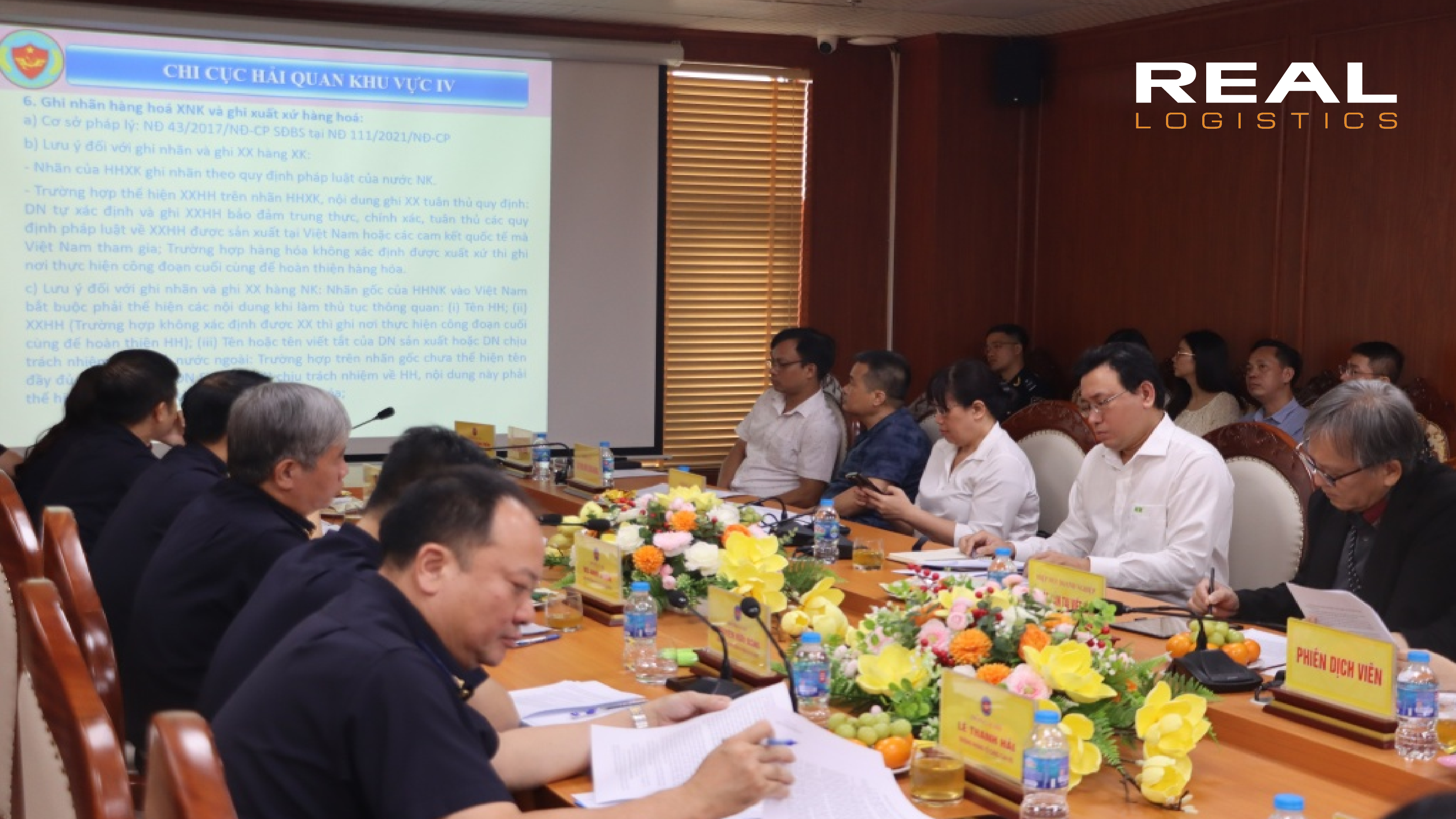Important Notes on Labeling and Origin Declarations for Import-Export Goods in Vietnam

1. Legal Basis and Regulatory Context
At the Vietnam Customs dialogue with business associations on May 9, 2025, the Customs Branch Region IV provided detailed guidance on labeling and origin declaration requirements for import and export goods.
The regulatory basis for these requirements includes:
- Decree 43/2017/ND-CP on labeling of goods
- Decree 111/2021/ND-CP, which amends and supplements Decree 43
In addition, to ensure proper labeling and origin declaration of goods, businesses need stay updated on the new procedures for verifying the origin of import and export goods under Decision No. 467/QĐ-CHQ. Issued by the General Department of Vietnam Customs, this directive clearly outlines risk assessment principles and detailed procedures for reviewing origin documents during and after customs clearance — helping enhance transparency and compliance throughout the entire import-export supply chain.

2. Export Goods: Labeling Must Comply with Importing Country
- Exported goods must be labeled according to the regulations of the importing country.
- If origin is indicated on the label, the exporter must self-declare origin based on honesty, accuracy, and in compliance with Vietnamese law and any international agreements Vietnam has joined.
Acceptable origin phrases include:
- “manufactured in”, “made in”, “country of origin”, “origin”, “produced by”, “product of” + country or territory name
- Country names must not be abbreviated
- If origin cannot be identified, the label must indicate the location of the final substantial processing, using phrases like: “assembled in”, “bottled in”, “blended in”, “finished in”, “packed in”, or “labeled in” + country or territory name
3. Imported Goods: Mandatory Labeling Requirements
According to Article 10 of Decree 43/2017/NĐ-CP, as amended by Decree 111/2021/NĐ-CP, the original label of imported goods must include the following mandatory information:
Name of the goods
Name and address of the organization or individual responsible for the goods: This could be the manufacturer or an entity responsible for the product overseas
Country of origin of the goods: If the origin cannot be clearly determined, the label must state the location where the final substantial processing or completion took place, using phrases such as “assembled in,” “bottled in,” “completed in,” along with the country or territory name
Other information as required for each specific type of product, in accordance with Appendix I of Decree 43 and related legal documents (e.g. ingredient lists, usage instructions, safety warnings, etc.)
If the original label does not include all the mandatory information, the missing details must be provided in accompanying documentation, such as Certificate of Origin (C/O), invoice, product catalog, manual, etc., during customs clearance.
Once customs clearance is completed and goods are delivered to the warehouse, importers must affix a supplementary label in Vietnamese containing all required information before the product is distributed in the Vietnamese market.
4. Real Logistics' Recommendations
With more than 16 years of experience in handling global trade procedures, Real Logistics advises:
- Regularly review product labeling requirements per destination market
- Accurately determine origin under FTA/CPTPP/EVFTA rules to access preferential tariffs
Partner with knowledgeable logistics providers for customs declaration review and regulatory compliance
—————————————
Real Logistics Co.,Ltd
👉 Facebook: Real Logistics Co.,Ltd
☎️ Hotline: 028.3636.3888 | 0936.386.352
📩 Email: info@reallogistics.vn | han@reallogistics.vn
🏡 Address: 39 - 41 B4, An Loi Dong, Thu Duc, HCM City
51 Quan Nhan, Nhan Chinh, Thanh Xuan, Ha Noi City

